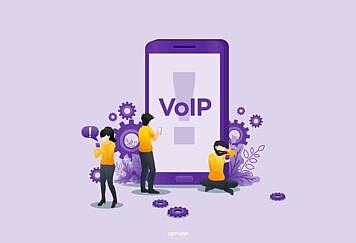Any business whether it is in manufacturing or retailing needs to prioritize procurement to reduce costs. New techniques have to be adapted to stay relevant for business objectives to transcend price wars and supply chain concerns.
Implementing category management procurement a business unit can effectively manage spending based on the categorization and reduced overheads and extra costs. To achieve better results in this direction, category management was developed four decades ago with principles of project management. It channelizes the sourcing through proper structure, and measures and aims at consistent improvement. Companies can create either a custom model to create their category list or follow the UN standard classification of goods and services list.
Advantages of Category Management
The benefits of category management include better results, higher quality, better savings, effective resource utilization, a better grasp of the market, and a greater emphasis on collaboration and creativity are all advantages of implementing a category management program. By grouping and streamlining suppliers and contracts, category management can eliminate tiresome processes like each business unit having to get its pens.
Here is an explanation of how category management benefits businesses:
-
Improves cash flows and margins
When category management principles are employed in procurement, the overheads and costs reduce. When the spending per category is curtained, the cash flows increase and improve the margins per unit.
Margin per SKU can be measured by businesses and used for identification of the ranking as per the effect of each unit in the total profit margins of various category components. When SKUs with lower profit margins are identified, the categories can be revamped during procurement. This improves organizational decision-making and aids businesses in improving a product line that can bind the consumers. In this manner, profit margins are exacerbated by adding profitable products to the categories and removing the unfavorable ones.
-
Resilience and agility
Business units using category management find it easier to recover, adjust to new regulations, and create supply chain risk mitigation strategies. A supply chain uses various strategies to assure a supple supply chain to maintain easy procurement at any stage. Out of the various methods used, category management ensures consistency and assures value-added benefits that are fruitful in the long run.
-
Improved vendor relations
Category management does not just focus on short-term routes to ensure costs are down but encompasses value addition through sustainable relationship management with vendors. Taking care of all the stakeholders in the growth story of a business ensures that they stick around in difficult times to support the objectives of the organization.
-
Risk mitigation
The category management solutions help in identifying the negative trends and as foresight, help businesses take all the necessary precautions proactively to mitigate the risk. These measures can include the preparation for production downtime, inventory shortage, and supply chain hurdles.
-
Improve spend visibility
Category managers can analyze where the business’s money is going and can track all the benefits at the unit level. A business has better visibility when the business intelligence tools display the money trail down to the department, category, and period. This information further helps in better decision-making in choosing to work on deadweights or remove them if they can no longer be a viable option in improving margins and reducing costs for the company and do not add value by any means.
-
Enhanced operational performance
Category management is a comprehensive tool that works round-the-clock and aids the business in taking decisions to improve operational performance through procurement of quality goods and services, outsourcing inefficient business processes where the costs cannot be brought down to third-party service providers, and eliminating the process that can neither be outsourced nor kept in the workflow.
Here are four strategies that can be employed to improve your category management game:
Analyze the current trend
Procurement decisions are affected by consumer insights, and these trends keep changing. So to stay ahead, businesses have to use category management tools that can automate the process through intelligent decision-making prowess and dashboards that represent the spending information assessment as per the categories.
These digital tools allow a business to analyze the size of the spend as per value and volume, the contract length of a supplier, and also measure the importance of your business to your supplier. In this manner, the business is always in check of what it needs to do, to stay relevant.
Implement decisions
Manufacturing departments or stores can establish new strategies to draw the consumer’s attention towards their products by examining the insight communities. Adding new products to categories, offering discounts or eliminating a category, or even changing the appearance of the store are a few decisions that are employed after following category management analytics.
When introducing new products, the product can be soft launched with only word of mouth to take it forward. By offering samples and free demonstrations in the stores, the visibility of the product is established. Once the category creates demand, effective advertising will help the SKU establish its place.
Maintain engagement levels
Category management strives at maintaining healthy supplier relations that can be possible only through effective engagement levels. It is not possible to reach a height without recognizing the contribution of the vendors. Just the way a business values consumers and employees, it can create methods to thank and value the vendors.
Risk-action plans
Always have a backup plan even though category management is a continuous process. This is because the regular plans may not work at times and that should not reflect the inefficiency of the total system.
Conclusion:
Category managers can think about long-term benefits while they are dealing with the smaller current issues. They have a knack for fighting battles and wars with the same finesse and letting businesses get a comprehensive pack of benefits through holistic strategies. This is possible in category management by breaking the silos and optimization of resources. Category management platforms offer automated solutions that break down repetitive tasks through robotic automation, and the analytics are synthesized through deep neural learning.
Follow TechStrange for more!





